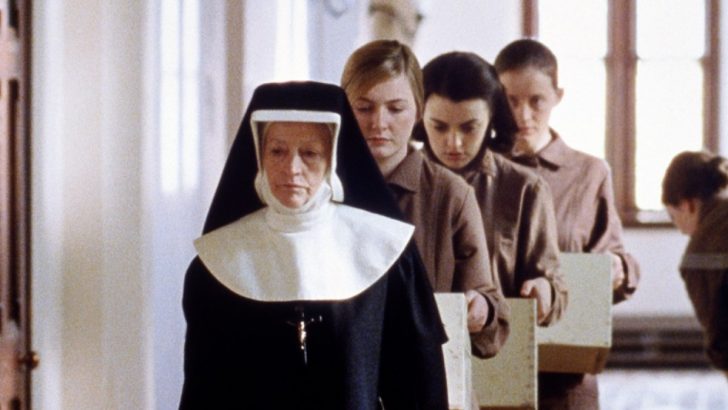The report into the country’s mother and baby homes is due out next February. I think that points very strongly to an abortion referendumwithin weeks of that, in other words in March or April of next year. The Government won’t want public anger at the mother and baby homes to go to waste. Those who back repeal of our pro-life law will hope the abortion referendum will be in the minds of many voters as a referendum about the Catholic Church. They will calculate that this will increase their chances of victory.
There is a huge amount of public anger at the Catholic Church in Ireland at present. This has been noted very recently by the Bishop of Ferns and the Bishop of Kilmore, Denis Brennan and Leo O’Reilly respectively.
Bishop O’Reilly noted “the hostility to the Church that is now a settled part of our society’s culture”.
He said: “It takes the form of gradual exclusion of Church people or activities from the public space. There is denigration of religious beliefs, practices and institutions on radio, television and on social and other media. There is often a focus on bad news about the Church to the almost total exclusion of any good news.”
Bishop Brennan referred to “the volume of criticism and negativity directed at the Church over recent times”.
Indication
Can we quantify the amount of anger at the Church? The sheer volume is not on its own an indication of some kind of universal feeling against Catholicism.
In 2011, a few months after the publication of the Cloyne Report and following the closing of the Irish Embassy to the Holy See and Enda Kenny’s thundering denunciation of the Vatican, Amárach Research conducted an opinion poll on behalf of The Iona Institute (which I head) to ascertain attitudes towards the Catholic Church in the wake of that outburst of public anger.
Among other things, it found that 47% of the public had an unfavourable attitude towards the Catholic Church, while only a quarter of the public had a favourable view (the remainder had no view).
In addition, it found that 23% of people agreed that Ireland would be better off if the Church disappeared from Irish society completely. This might be called the ‘Bríd Smith view’. To put it in Deputy Smith’s terms, the Catholic Church belongs in the “dustbin”.
Thus, as at November 2011, almost a quarter of Irish people could be classified as very anti-Catholic and this section of the population generates an awful lot of noise.
Would this percentage have dropped between now and then? It might have for a while, but given the torrent of negative stories about the Church lately, it seems likely that it is back at the 2011 figure.
Controversies
In recent weeks, we have had huge public controversies over the Tuam Mother and Baby Home and the decision to give ownership of the proposed new national maternity hospital to the Sisters of Charity (who have now announced their decision to quit all their hospitals).
This has led to massive vilification of the nuns, as though they have never offered anything positive to society in all their years.
I’ve written before that there is the no major religion or organisation or ideology or culture or country that does not have dark chapters in its history. Human nature makes that unavoidable. But when we see only the dark chapters being highlighted, then we have reason to raise an eyebrow.
What major film of recent times has been about a heroic priest or nun? Instead we have had A Love Divided, Song for a Raggy Boy, Philomena and The Magdalene Sisters, repeated seemingly endlessly. Netflix is to air a programme about mother and baby homes set in Ireland, even though many societies had similar institutions and by no means were they all run by the Catholic Church.
A movie like Philomena could as easily been about the search of an English or American woman for her long-lost adopted child. Instead there is a relentless fixation on Ireland, and specifically Catholic Ireland. Why is that?
The Magdalene Sisters was made by a Scottish director and set here even though there were Magdalene homes in Scotland. Are films of this kind set in Ireland more marketable?
Film-makers, if they were so minded, could find many heroic nuns and priests to base movies on. They don’t, and therefore we get one side of the story only and this gives the public an incredibly unbalanced picture of the history of the Catholic Church in Ireland.
Portrayal
There must be people under a certain age who have never met a nun and whose only image of nuns comes from the likes of the The Magdalene Sisters. Is that fair? Would it be fair if every portrayal of some other group in society was uniformly negative?
It was obvious during the British General Election that the Tory press was ferociously anti-Corbyn. They never gave him an even break – the criticism and ridicule were relentless. Everything was done to destroy him.
If it is fair to say the Tory press was anti-Corbyn, isn’t it fair to say that large sections of the Irish media are anti-Catholic, and that some politicians and groups are anti-Catholic? Of course it is.
What’s to be done? For one thing, we have to call it what it is. We can’t be scared to call something by its proper name. We have to be willing to call out anti-Catholicism when we see it. It’s good to see some bishops getting to this point.
Secondly, there should be an inventory of all the good the Church has done in the past and is still doing today. If we Catholics don’t remind people of the great good done by many Catholics – priests, religious and laity – who is going to do it for us, especially in the present climate? We must be more willing to defend ourselves.


 David Quinn
David Quinn A scene from the from The Magdalene Sisters
A scene from the from The Magdalene Sisters